<< Learning Center
Media Accessibility Information, Guidelines and Research
Deaf People are Patient People
By John F. Levesque
[Editor's note: This article was written in 2004 and has since been archived. Some content may be outdated.]
Practicing Patience

As a member of the Deaf community in America, I can tell you that we are a patient people. We are willing to wait once a month to go to a selected nearby theatre that is showing an open-captioned feature entertainment film that lasts maybe two hours. We pay the admission for this film.
As a member of the Deaf community in America, I can tell you that we are a patient people. We are willing to wait for a once-a-month Rear Window Captioning (RWC) movie that you view through a glass screen to read the captions not shown on the screen. This is two hours of enjoyment for some, but a pain in the butt for others dealing with the glass. We also pay for this viewing, after patiently driving two hours to the theatre.
We (Deaf) get even more practice at patience as we drive down to the local videotape store and browse through several thousand videotapes to find those that are closed-captioned. Most of the time, the current movies are captioned, but not much else. Whatever we find we have to pay for, just like the other folks do. And, we must buy a decoder or a television with a decoder chip.
A History of Patience
I can tell you we (Deaf) are a patient people because we have a history to prove it. Movies with sound were introduced in the late 1920s, and we had to wait 30 years for the first one to be captioned. The Captioned Films for the Deaf (CFD) program began offering some captioned movies in the late 1950s, but we had to wait till the "movie night" once a week at a residential school or deaf club.
As a member of the Deaf community in America, I can tell you we are a patient people. We had to wait another 30 years for captioned television, which today is not even entirely captioned. And good luck at the video store finding any hobby or travel or educational captioned videos. Again, the CFD program, now called the Captioned Media Program (CMP), is the primary source for providing this video store type of access.
Patience Pays Off—Sometimes
We now have a system in America where you can borrow both educational and entertainment captioned videos and not pay one cent. Yes, I said, FREE! Even the postage is free. Now, we all know that the Deaf community loves to get things for FREE! Do kid me not! We have waited a long time for something like this!
The secret agency that provides this service is within the Department of Education--the old CFD, now CMP. They have 800 numbers to call (TTY, voice, and fax). They have e-mail at info@cfv.org and Web at http://www.cfv.org. The service is fast, on time, and FREE. Wow, still at no cost to the Deaf consumer. How can you beat this, so far?
The CMP has excellent educational open-captioned videos in all subject areas, ranging from math problems and measurement to English composition and grammar. I particularly like to use a variety of videos to teach English as a second language to Deaf consumers who wish to improve their current skills.
The CMP also has classic movies, Spanish-captioned titles, and other special-interest topics. For those lucky Deaf Americans who own or use computers, the CMP has free-loan captioned CD-ROM disks, and has begun video streaming of several hundred titles!
Conclusion
Yes, Deaf America, we have learned patience. More will be required, no doubt. But the CMP is one program that will not try our patience!
About the Author
Jax Levesque is Coordinator/Faculty of Deaf Studies Program at Holyoke Community College in Holyoke, Massachusetts. His areas of teaching are Deaf Culture, History of the Deaf, Deaf Literature, and Introduction to Deaf Studies. He is also a very patient Deaf man. You may contact him at deafjax@juno.com.
Holyoke Community College (HCC)
Interest in a Deaf Studies program at HCC developed initially because more Deaf students were enrolling in the college, people who were hearing wanted to learn ASL and learn about Deaf culture, and there was a growing need for interpreters and other professionals familiar with working with Deaf people.
A driving force behind the development of this program was a very knowledgeable and hardworking advisory board, consisting of members of the local Deaf community. Much credit for making this all happen also goes to Dr. John Field, Dean of the Arts and Humanities at HCC, along with Carol-Ann Smalley, who works with Deaf students at HCC under the supervision of Maureen Conroy, Director of Disabled Students Services.
For more information about the HCC Deaf Studies program, contact:
Holyoke Community College
303 Homestead Avenue
Holyoke, MA 01040
TTY (413) 284-1717
FAX (413) 552-2295
WEB http://www.hcc.mass.edu
Tags:
Please take a moment to rate this Learning Center resource by answering three short questions.

